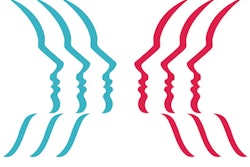In an effort to improve healthcare quality, recent changes to the U.S. healthcare system have included a shift of payment structures away from volume-based reimbursements to a value-based model. Likewise, the American College of Radiology's Imaging 3.0 initiative emphasizes quality over quantity in radiology, said presenter Dr. Elizabeth Dibble of Brown University's Warren Alpert Medical School.
"Radiologists are now expected to participate in federal quality initiatives and practice patient-centered care," she said.
In early 2013, the institution began administering patient satisfaction surveys on iPads mounted on kiosks at five affiliated private-practice outpatient imaging centers, Dibble said. The surveys included 10 questions and an optional free-text area for additional comments. After two years of collecting surveys (6,512 out of 137,059 patient encounters), the researchers decided it was time to assess the validity and reliability of the survey, as well as the patterns of responses.
Dibble noted that patient satisfaction surveys should address three factors: exam experience, intake experience, and facilities/convenience. To improve patient satisfaction, radiology practices may focus on improving areas that drew the most negative ratings; in their survey, that was wait time and the preregistration process.
Negative free-text comments can also provide insight into specific patient concerns, she said.
"In our survey, these pertained most frequently to convenience, facilities, and staff," she told AuntMinnie.com. "Interestingly, patients who underwent MRI examinations were more likely to write a negative comment than patients who underwent other types of examinations. In summary, radiology practices may improve patient satisfaction by decreasing wait times, streamlining the registration process, and improving patient comfort during MRI examinations."
Want to learn more? Take in this Tuesday morning presentation.



















